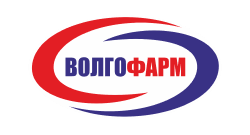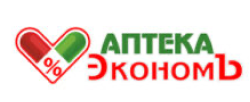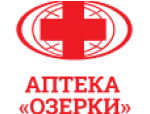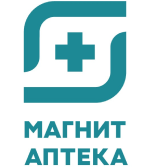-
Mexidol® solution for IV and IM administration 50 mg/ml
10 vials of 2 ml -
Mexidol® solution for IV and IM administration 50 mg/ml, 5 vials of 5 ml
-
Mexidol® solution for IV and IM administration 50 mg/ml, 10 vials of 5 ml
-
Mexidol® film-coated tablets, 30 tablets of 125 mg
-
Mexidol® film-coated tablets, 50 tablets of 125 mg
-
Mexidol® FORTE film-coated tablets, 40 tablets of 250 mg
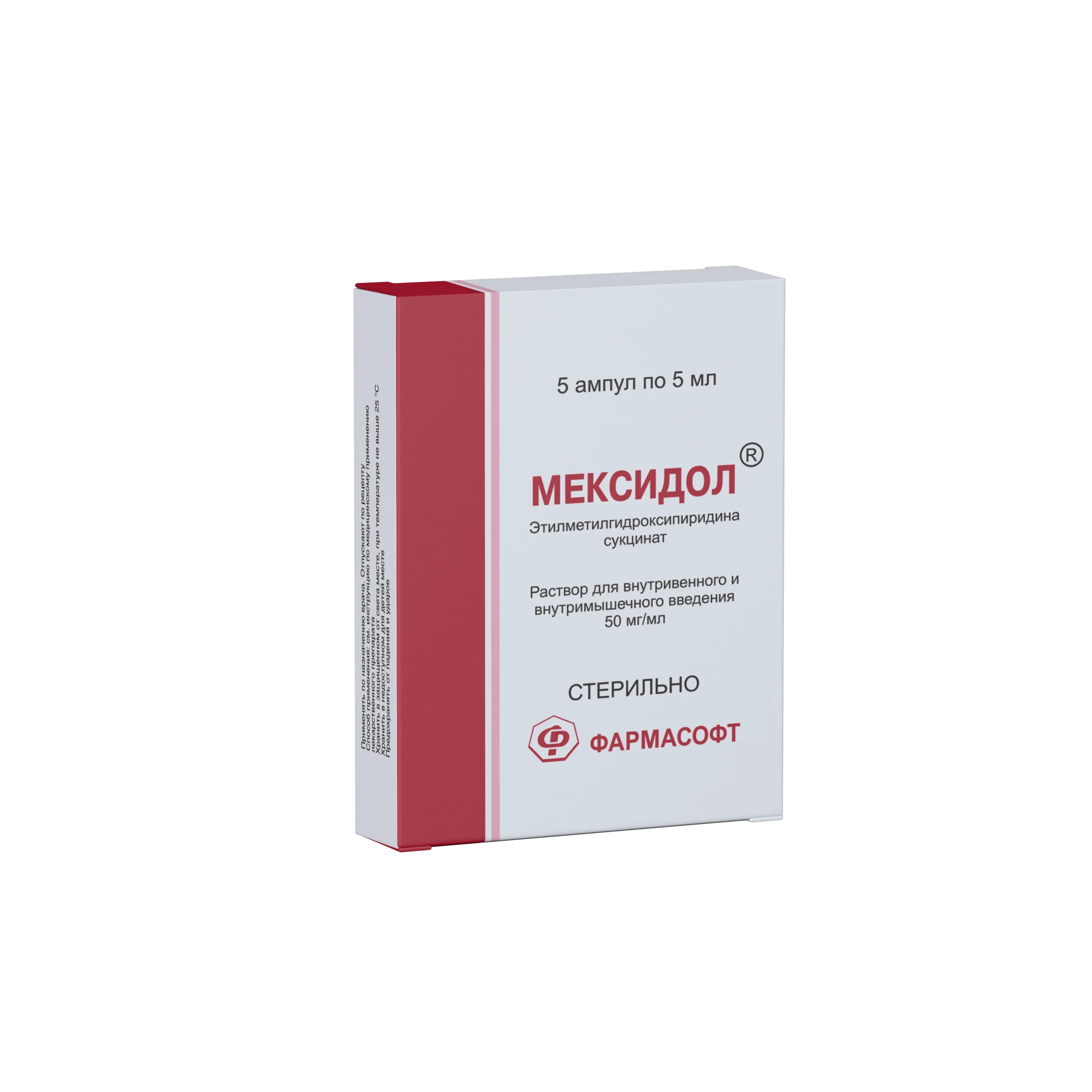
5 vials of 5 mL
1 ml contains 50 mg of the active substance
1. Name of the drug
Mexidol® solution for intravenous and intramuscular administration, 50 mg/ml, 5 ml
2. Qualitative and quantitative composition
Active ingredient: ethylmethylhydroxypyridine succinate. 1 mL of the solution contains 50 mg of ethylmethylhydroxypyridine succinate. 5 mL vial contains 100 mg of ethylmethylhydroxypyridine succinate. Main excipients: sodium metabisulfite – 0.4 mg in 1 mL of the drug (see section 4.4.). A complete list of excipients is given in section 6.1..
3. Dosage form
Solution for intravenous and intramuscular administration.
Transparent colorless or slightly yellowish liquid.
4. Clinical data
4.1. Indications:
- acute cerebral circulation disorders;
- cerebral infarction (ischemic stroke);
- traumatic brain injury, consequences of traumatic brain injury;
- dyscirculatory encephalopathy;
- Chronic cerebral ischemia;
- Vegetative dystonia syndrome;
- Mild (moderate) cognitive disorders;
- Anxiety disorders in neurotic and neurosis-like states;
- acute myocardial infarction (from the first day) as part of complex therapy;
- primary open -angle glaucoma of various stages, as part of complex therapy;
- withdrawal syndrome in alcoholism with predominance of neurosis-like and vegetative-vascular disorders;
- acute intoxication with antipsychotic drugs;
- acute purulent-inflammatory processes of the abdominal cavity (acute necrotizing pancreatitis, peritonitis) as part of complex therapy.
4.2. Dosage and administration:
Dosage regimen
: Adults: The maximum daily dose should not exceed 1200 mg.
For acute cerebrovascular accidents, Mexidol® is administered intravenously (IV) by drip, 200-500 mg 2-4 times daily for the first 10-14 days, then intramuscularly (IM), 200-250 mg 2-3 times daily for 2 weeks, after which a transition to oral dosage forms is recommended.
In case of cerebral infarction (ischemic stroke), Mexidol is administered intravenously by drip at 500 mg (10 ml) 2 times a day for 10 days, after which a transition is made to taking oral dosage forms at a dose of 250 mg 3 times a day for 60 days.
In case of traumatic brain injury and consequences of traumatic brain injury, Mexidol® is used for 10-15 days intravenously by drip at 200-500 mg 2-4 times a day, after which it is recommended to switch to oral dosage forms.
In case of discirculatory encephalopathy in the decompensation phase, Mexidol® should be prescribed intravenously by jet or drip at a dose of 200-500 mg 1-2 times a day for 14 days. Then intramuscularly at 100-250 mg per day for the next 2 weeks, after which it is recommended to switch to oral dosage forms.
For a course of prevention of discirculatory encephalopathy , the drug is administered intramuscularly at a dose of 200-250 mg 2 times a day for 10-14 days, after which it is recommended to switch to oral dosage forms.
In chronic cerebral ischemia, Mexidol® should be prescribed at 10 ml (500 mg) once a day intravenously by drip or intravenously by slow jet stream for 14 days, after which it is recommended to switch to oral dosage forms.
In mild (moderate) cognitive disorders, Mexidol® should be prescribed at 10 ml (500 mg) once a day intravenously by drip or intravenously by slow jet stream for 14 days, after which it is recommended to switch to oral dosage forms.
In anxiety disorders, the drug is used intramuscularly at a daily dose of 100-300 mg per day for 14-30 days, after which it is recommended to switch to oral dosage forms.
In acute myocardial infarction, as part of complex therapy, Mexidol® is administered intravenously or intramuscularly for 14 days against the background of traditional therapy for myocardial infarction, including nitrates, beta-blockers, angiotensin-converting enzyme (ACE) inhibitors, thrombolytics, anticoagulant and antiplatelet agents, as well as symptomatic agents as indicated.
In the first 5 days, to achieve the maximum effect, it is advisable to administer the drug intravenously, in the following 9 days, Mexidol® can be administered intramuscularly.
Intravenous administration of the drug is performed by drip infusion, slowly (to avoid side effects) in 0.9% sodium chloride solution or 5% dextrose (glucose) solution in a volume of 100-150 ml for 30-90 minutes. If necessary, a slow jet injection of the drug is possible for at least 5 minutes.
The drug is administered (intravenously or intramuscularly) 3 times a day every 8 hours. The daily therapeutic dose is 6-9 mg/kg of body weight per day, a single dose is 2-3 mg/kg of body weight. The maximum daily dose should not exceed 800 mg, a single dose is 250 mg.
For open-angle glaucoma of various stages, as part of complex therapy, Mexidol® is administered intramuscularly at 100-300 mg per day, 1-3 times a day for 14 days.
For alcohol withdrawal syndrome, Mexidol® is administered at a dose of 200-500 mg intravenously by drip or intramuscularly 2-3 times a day for 5-7 days.
In acute intoxication with antipsychotic drugs, the drug is administered intravenously at a dose of 200-500 mg per day for 7-14 days.
In acute purulent-inflammatory processes of the abdominal cavity (acute necrotic pancreatitis, peritonitis), the drug is prescribed on the first day both in the preoperative and postoperative periods. The administered doses depend on the form and severity of the disease, the prevalence of the process, and the variants of the clinical course. The drug should be discontinued gradually only after a stable positive clinical and laboratory effect.
In acute edematous (interstitial) pancreatitis, Mexidol® is prescribed at 200-500 mg 3 times a day, intravenously by drip (in 0.9% sodium chloride solution) and intramuscularly. Mild necrotic pancreatitis - 100-200 mg 3 times a day intravenously by drip (in 0.9% sodium chloride solution) and intramuscularly. Moderate severity - 200 mg 3 times a day, intravenously by drip (in 0.9% sodium chloride solution). Severe course - in a pulse dosage of 800 mg on the first day, with a twice-daily administration regimen; then 200-500 mg 2 times a day with a gradual reduction in the daily dose. Extremely severe course - in an initial dosage of 800 mg per day until persistent relief of pancreatogenic shock manifestations, after stabilization of the condition, 300-500 mg 2 times a day intravenously by drip (in 0.9% sodium chloride solution) with a gradual reduction in the daily dosage.
Mode of administration
IM or IV (by drop or stream infusion).
Stream infusion of Mexidol® is performed slowly for 5-7 minutes, and drop infusion of the drug is performed at a rate of 40-60 drops per minute.
See section 6.6 for instructions on how to prepare the drug before use.
4.3. Contraindications
- hypersensitivity to ethylmethylhydroxypyridine succinate or to any of the excipients listed in section 6.1;
- acute renal failure;
- acute hepatic failure;
- pregnancy, breastfeeding (due to insufficient knowledge of the drug);
- pediatric use (due to insufficient data on the drug action).
4.4. Special instructions and precautions for use:
In individual cases, especially in predisposed patients with bronchial asthma with hypersensitivity to sulfites, development of severe hypersensitivity reactions and bronchospasm is possible.
4.5. Interaction with other drugs and other types of interaction:
The drug enhances the effects of benzodiazepine anxiolytics, anticonvulsants (carbamazepine) and antiparkinsonian agents (levodopa). The drug reduces the toxic effects of ethyl alcohol.
Based on the results of clinical studies and post-marketing surveillance, no signals of drug-drug interactions have been identified.
4.6. Fertility, pregnancy and lactation:
Mexidol® is contraindicated during pregnancy and breastfeeding.
4.7. Effects on ability to drive and use machines
During the drug administration period, caution should be exercised when performing work requiring quick psychophysical reactions (driving vehicles, using machines, etc.).
4.8. Adverse reactions
Safety profile summary
To avoid the occurrence of adverse reactions, it is recommended to follow the dosage regimen and the rate of the drug administration.
Summary of adverse reactions
The frequency of adverse reactions was determined pursuant to the World Health Organization (WHO) classification: very common (≥10%), common (≥1 and <10%), uncommon (≥0.1 and <1%), rare (≥0.01% and <0.1%), very rare (<0.01%) and unknown (frequency cannot be determined based on available data).
Immune system disorders: very rare – anaphylactic shock, angioedema, urticaria.
Mental disorders: very rare – drowsiness.
Nervous system disorders: very rare – headache, dizziness (may be associated with an excessively high rate of administration and is short-term).
Vascular disorders: very rare – decreased blood pressure (BP), increased BP (may be associated with an excessively high rate of administration and is short-term).
Respiratory system, chest and mediastinal organs disorders: very rare – dry cough, throat congestion, chest discomfort, difficulty breathing (may be associated with an excessively high rate of administration and is short-term).
Gastrointestinal disorders: very rare – dry mouth, nausea, unpleasant odor, metallic aftertaste.
Skin and subcutaneous tissue disorders: very rare – itching, rash, hyperemia.
General disorders and reactions at the injection site: very rare – warmth sensation.
Reporting suspected adverse reactions
It is important to report suspected adverse reactions after the marketing authorization of a drug in order to ensure continuous monitoring of its benefit-risk ratio. Healthcare professionals are advised to report any suspected adverse reactions of the drug through the national adverse reaction reporting systems of the Eurasian Economic Union member states.
Address: bld. 1, 4, Slavyanskaya Square, 109012 Moscow, Russia
Federal Service for Supervision in Healthcare of the Russian Federation (Roszdravnadzor)
4.9 Overdosage:
Symptoms
Drowsiness, insomnia.
Treatment
Due to low toxicity, overdose is unlikely. Treatment is usually not required, symptoms disappear within a day. In the case of pronounced manifestations, supportive and symptomatic treatment should be administered.
5. Pharmacological properties
5.1. Pharmacology
Pharmacotherapeutic group: Other drugs for the treatment of diseases of the nervous system. Other drugs for the treatment of diseases of the nervous system.
ATX code: N07XX.
The pharmacological action of Mexidol® is due to its antihypoxant, antioxidant and membrane-protective action. It inhibits lipid peroxidation processes, increases superoxide dismutase activity, increases the lipid-protein ratio, reduces membrane viscosity and increases membrane fluidity. The drug modulates the activity of membrane-bound enzymes (calcium-independent phosphodiesterase, adenylate cyclase, acetylcholinesterase), receptor complexes (benzodiazepine, gamma-aminobutyric acid (GABA), acetylcholine), which enhances their ability to bind to ligands, helps to preserve the structural and functional organization of biomembranes, transport neurotransmitters and improve synaptic transmission. Mexidol® increases the content of dopamine in the brain. It causes enhancement of compensatory activity of aerobic glycolysis and reduction of the inhibition rate of oxidative processes in the Krebs cycle under hypoxia with an increased content of adenosine triphosphate (ATP), creatine phosphate and activation of energy-synthesizing functions of mitochondria, as well as promotes stabilization of cell membranes.
Pharmacodynamic effects
It has antihypoxic, membrane-protective, nootropic, anticonvulsant, anxiolytic effects, increases the body's resistance to stress. The drug increases the body's resistance to the effects of major damaging factors, to oxygen-dependent pathological conditions (shock, hypoxia and ischemia, cerebrovascular accident, intoxication with alcohol and antipsychotic drugs (neuroleptics)). Stabilizes the membrane structures of blood cells (erythrocytes and platelets) during hemolysis.
Mexidol® improves cerebral metabolism and blood supply to the brain, improves microcirculation and rheological properties of blood, reduces platelet aggregation. It has a hypolipidemic effect, reduces the level of total cholesterol and low-density lipoproteins (LDL).
The use of Mexidol in cerebral infarction (ischemic stroke) reduces the degree of neurological deficit and improves the recovery of neurological functions, as well as improves the functional outcome and reduces disability. Mexidol® normalizes metabolic processes in the ischemic myocardium, reduces the necrosis zone, restores and improves electrical activity and myocardial contractility, and increases coronary blood flow in the ischemic zone, reduces the effects of reperfusion syndrome in acute coronary insufficiency. Increases the antianginal activity of nitro drugs.
Mexidol® helps preserve retinal ganglion cells and optic nerve fibers in progressive neuropathy caused by chronic ischemia and hypoxia. Improves the functional activity of the retina and optic nerve, increasing visual acuity.
Reduces enzymatic toxemia and endogenous intoxication in acute pancreatitis.
Clinical performance and safety
A randomized double-blind placebo-controlled parallel-group study of efficacy and safety of Mexidol® in phase III (EPICA) in long-term sequential therapy in patients with hemispheric ischemic stroke in the acute and early recovery periods involved 150 patients aged 40 to 79. The patients were randomized into 2 groups: the first group was treated with Mexidol® 500 mg daily by IV drop infusion for 10 days followed by 1 tablet (125 mg) 3 times a day for 8 weeks. The Mexidol® group showed a significant reduction of symptoms and functional disorders, as compared with the placebo group. Mexidol® administration led to significantly more pronounced improvement of vital activity in comparison with the placebo: the average score on the Modified Rankin Scale (mRS) at the end of therapy was lower in the Mexidol® group (p = 0,04). Furthermore, this group demonstrated more pronounced dynamics of decrease in the mRS average score (p = 0.023). The proportion of the patients who achieved recovery corresponding to 0-2 points on the mRS at the end of therapy was significantly higher in the Mexidol® group in comparison with the placebo group: 59 (96,7%) and 53 (84,1%), respectively (p = 0.039). The neurological deficit at the end of therapy was significantly lower in the Mexidol® group: the testing according to the National Institute of Health Stroke Scale showed that the mean value at the end of therapy was lower in the Mexidol® group (p = 0.035). The use of Mexidol® contributed to better functional recovery: the proportion of the patients with no spatial mobility issues was significantly higher (p = 0.022). According to the subanalysis results, the efficacy of Mexidol® on all of the scales used was identical in all of the age groups. There were no significant differences in the frequency of adverse reactions in the patients of both groups, and the safety profile of long-term sequential therapy with Mexidol® was comparable to that of the placebo in the patients of different age groups.
An international multicenter randomized double-blind placebo-controlled study to evaluate the efficacy and safety of sequential therapy with Mexidol® and Mexidol® FORTE 250 in phase III (MEMO) in patients with chronic cerebral ischemia involved 318 patients aged from 40 to 90. The patients were randomized into 2 groups: the first group was treated with Mexidol® 10 ml (500 mg) daily by IV drop or stream infusion slowly for 14 days followed by Mexidol® FORTE 250 1 tablet 3 times a day for the next 60 days. According to the results of the study, statistically significant changes in scores on the Montreal Cognitive Assessment Scale (MoCA) were detected at the end of therapy when comparing the progress between the groups of Mexidol®/Mexidol® FORTE 250 and the placebo (p < 0.000001, t-test for independent samples). The lower boundary of the 95% confidence interval for the mean difference of the main efficacy index between the groups of Mexidol®/Mexidol® FORTE 250 and the placebo was 1.51. This boundary is a positive value, indicative of the superior efficacy of Mexidol® and Mexidol® FORTE 250 over the placebo. Moreover, the results of the study revealed statistically significant changes of the MoCa scores at the end of therapy by the patient for the purpose of comparison of the progress between the groups of Mexidol® and Mexidol® FORTE 250 and placebo in the subanalysis for all of the age groups, which indicates equal efficacy of Mexidol® and Mexidol® FORTE 250 in all of the age groups. According to the results of evaluating secondary endpoints of efficacy of Mexidol® and Mexidol® FORTE 250 during the therapy, statistically significant differences between the drug groups and the placebo group were obtained for the following indicators: changes in cognitive impairment severity over time on the MoCA scale; changes in cognitive impairment severity over time according to the digit symbol substitution test; changes in asthenic disorders severity over time according to the Multidimensional Fatigue Inventory MFI-20; vegetative changes over time according to the Vein’s Questionnaire; changes in the anxiety level over time according to the Beck Depression Inventory; motor changes over time according to the Tinetti test; changes in the general clinical impression over time using the Clinical Global Impressions Scale; changes in the patients’ quality of life according to the Short Form (36) Health Survey questionnaire (psychological component of health).
The results of the statistical analysis of the adverse events frequency as well as the results of laboratory tests and physical examination demonstrate the absence of significant differences between the compared groups in terms of the primary safety endpoints, which is indicative of the comparable nature of the safety profiles of Mexidol® and Mexidol® FORTE 250 and the placebo. The subanalysis performed in patients of different age groups confirmed the similar nature of safety profiles of Mexidol®+Mexidol® FORTE 250 (ethylmethylhydroxypyridine succinate) and the placebo.
A prospective international multicenter randomized double-blind placebo-controlled study to evaluate the efficacy and safety of Mexidol + Mexidol FORTE 250 (MIR, phase III) in their sequential use in patients in the acute and early recovery periods of ischemic stroke was conducted with the participation of 304 patients aged 40 to 75 years. Patients in the study group received therapy with Mexidol 50 mg / ml, 10 ml (500 mg) 2 times a day (1000 mg per day) intravenously by drip for 10 days, followed by Mexidol FORTE 250 1 tablet 3 times a day for the next 60 days. Patients in the control group received Placebo according to a similar scheme. At the end of therapy, the change in the patient's condition assessment results using the mRS scale relative to the baseline was -2.45 points in the Mexidol + Mexidol FORTE 250 group and -2.01 points in the placebo group, and this difference was statistically significant (p = 0.003). At the end of therapy, a statistically significant prevalence of the proportion of disabled patients (3 or more points on the mRS scale) was revealed in the Placebo group (28%) compared to the Mexidol + Mexidol FORTE 250 group (16%) (p = 0.016). At the same time, the proportion of patients with an assessment of 0-1 point on the mRS scale at the end of therapy was statistically significantly (p = 0.002) higher in the Mexidol + Mexidol FORTE 250 group (60%) than in the Placebo group (41%). The obtained results of the study allow us to state the greater efficacy of Mexidol + Mexidol FORTE 250 in improving the functional outcome of the disease and reducing the level of disability compared to Placebo. Also, by the end of therapy, a statistically significant difference was recorded in terms of absolute dynamics, compared with the initial level and on the NIHSS scale: -7.00 [-9.00; -6.00] points in the Mexidol + Mexidol FORTE 250 group and -7.00 [-8.00; -5.00] points in the Placebo group (p < 0.001). Thus, when using Mexidol + Mexidol FORTE 250, a statistically significant, more pronounced recovery of neurological functions was noted compared to Placebo. The median of absolute dynamics according to the Rivermead index in the group of patients receiving Mexidol + Mexidol FORTE 250 at the end of therapy was 10.00 [7.00; 12.00] points compared to the Placebo group – 9.00 [7.00; 11.00] points (statistically significant differences between the groups at p = 0.008). According to the obtained results, the use of Mexidol in the acute and early recovery periods of ischemic stroke improves the patient's activity and mobility, which leads to more successful rehabilitation. An additional analysis in the ITT population including data from early termination visits confirmed the above findings. Statistical analysis of vital signs. SBP, DBP, HR and RR statistically significantly normalized in both groups. Thus, no negative effect of Mexidol on the cardiovascular system was detected. The safety analysis based on the registration of adverse reactions does not contain data on the presence of adverse drug interactions of the study drug Mexidol (parenteral and oral administration) with other drugs (antihypertensive, antithrombotic, lipid-lowering) included in the basic therapy. The results of the statistical analysis of the frequency of adverse events, physical examination data, including an assessment of vital signs, laboratory and instrumental examination methods demonstrated the absence of significant differences between the compared groups in the main safety indicators.
5.2. Pharmacokinetics:
Absorption
When administered intramuscularly, the drug is detected in blood plasma within 4 h after administration. The time-to-peak-concentration Tmax is 0.45-0.5 h. Cmax at an administration dose of 400-500 mg is 3.5-4.0 µg/mL
Distribution
The drug rapidly exits the blood stream into organs and tissues and is rapidly eliminated from the body. The mean residence time of the drug (MRT) is 0.7-1.3 h.
Biotransformation
The drug is metabolized in the liver by glucuronic conjugation. 5 metabolites have been identified: 3-oxypyridine phosphate is formed in the liver and decompounds into phosphoric acid and 3-oxypyridine by alkaline phosphatase; the 2nd metabolite is pharmacologically active, is formed in large quantities and detected in the urine 1-2 days after administration; the 3rd metabolite is excreted in large quantities with urine; the 4th and 5th metaolites are glucuronic conjugates.
Elimation
The drug is excreted mainly with urine, typically in the glucuronic conjugated form and in insignificant amounts in the unchanged form.
5.3. Preclinical safety data
No specific harm to humans has been identified in preclinical data obtained from standardized studies of pharmacological safety, repeated dose toxicity, genotoxicity, carcinogenic potential, reproductive and ontogenetic toxicity.
6. Pharmaceutical properties
6.1. List of excipients:
- Sodium metabisulfite;
- Water for injection.
6.2. Incompatibility:
This drug should not be mixed with other drugs except those listed in section 6.6.
6.3. Validity period (shelf life)
3 years.
6.4. Special storage precautions:
Store in a place protected from light at a temperature no higher than 25°C.
6.5. Description and content of the primary packaging
5 ml of the drug is packaged into vials made of colorless glass of the 1st hydrolytic class or neutral glass of NS-3 grade with a snap-off neck and three marking rings (yellow upper ring, white middle ring, red lower ring) or without marking rings.
The vial has a label made of writing paper, or label paper, or self-adhesive paper, or is inscribed with rotogravure ink or ink for inkjet printing for glassware or using enamel printing with subsequent heat treatment.
5 vials are placed into a blister pack made of polyvinyl chloride film type EP-73.2 or 4 blister packs of 5 ml vials are placed into a folding-box carton pack together with the patient information leaflet (package insert).
2 or 4 blister packs of 5 ml vials are placed into a folding-box carton pack together with the patient information leaflet (package insert).
6.6. Special precautions for disposal of the used drug or waste obtained after the drug administration or handling
There are no special requirements for disposal.
When administered by infusion, the drug should be diluted in 100-150 ml of 0.9% sodium chloride solution or 5% dextrose (glucose) solution.
7. Marketing authorization holder
Russia
PHARMASOFT RESEARCH AND PRODUCTION COMPLEX LLC
Bld. 12, floor 1, 41, Sudostroitelnaya Street, 115407 Moscow, Russia
Phone/fax: +7 495 626-47-55 Email: Pharmasoft@pharmasoft.ru
7.1 Representative of the marketing authorization holder:
Please address consumer complaints to:
in the Russian Federation:
"LLC “RESEARCH AND PRODUCTION COMPANY “PHARMASOFT”
Bld. 12, floor 1, 41, Sudostroitelnaya Street, 115407 Moscow, Russia.
Phone/fax: +7 (495) 626-47-55
Email: Pharmasoft@pharmasoft.ru
8. Marketing authorization number
ЛП-No.(000107)-(РГ-RU)
9. Date of the first marketing authorization (authorization confirmation, re-authorization)
Date of the first marketing authorization: December 29, 2020.
10. Text revision date
The summary of product characteristics for Mexidol® is available on the information portal of the Eurasian Economic Union in the Internet information and communication network at http://eec.eaeunion.org/.
Active ingredient: ethylmethylhydroxypyridine succinate
Before taking the drug, carefully read the package insert, as it contains important information for you.
- Keep the package insert. You may need to read it again.
- If you have any additional questions, consult your physician, pharmacist, or nurse.
- This drug has been prescribed specifically for you. Do not share it with others. It may harm them, even if their symptoms are similar to yours.
- If you experience any adverse reactions, consult your physician, pharmacist, or nurse. This recommendation applies to all possible adverse reactions, including those not listed in section 4 of the package insert.
The contents of the package insert:
- Composition and intended use of Mexidol®.
- What you need to know before taking Mexidol®.
- Mode of administration of Mexidol®.
- Possible adverse reactions.
- Storage conditions of Mexidol®.
- Package contents and other information.
1. Composition and intended use of Mexidol®
The drug Mexidol® contains the active substance ethylmethylhydroxypyridine succinate, which is an antioxidant.
Indications for use
The drug Mexidol® is used in adults over 18 years of age in the following conditions:
- acute cerebrovascular accident (excluding cerebral infarction);
- cerebral infarction (ischemic stroke);
- traumatic brain injury and consequences of traumatic brain injury;
- a disorder of the brain caused by a circulatory disorder (dyscirculatory encephalopathy);
- circulatory disorder (chronic ischemia) of the brain;
- disorder of the autonomic nervous system (autonomic dystonia syndrome);
- decreased memory, attention and mental performance (mild (moderate) cognitive impairment);
- anxiety disorders against the background of neurotic and neurosis-like conditions;
- acute myocardial infarction (from the first day) as part of complex therapy;
- primary open -angle glaucoma of various stages, as part of complex therapy;
- manifestations of withdrawal syndrome (withdrawal syndrome) in alcoholism with a predominance of disorders of the nervous system and blood vessels (neurosis-like and vegetative-vascular disorders);
- acute poisoning (intoxication) with antipsychotic drugs;
- acute purulent-inflammatory processes in the abdominal cavity (acute necrotic pancreatitis, peritonitis) as part of complex therapy.
Mode of action of the drug Mexidol®
Mexidol® increases the body's resistance to various damaging factors, acting as an antioxidant at the cellular level.
The use of Mexidol in cerebral infarction (ischemic stroke) reduces the degree of neurological deficit and improves the recovery of neurological functions, and also improves the functional outcome and reduces disability. The drug improves metabolic processes and blood supply to the brain, improves microcirculation, reduces blood viscosity and thrombus formation. Mexidol® normalizes metabolic processes in the ischemic myocardium, reduces the necrosis zone, restores and improves electrical activity and myocardial contractility, and increases coronary blood flow in the ischemic zone.
Mexidol® helps preserve retinal ganglion cells and optic nerve fibers in developing neuropathy caused by chronic ischemia and hypoxia. Improves the functional activity of the retina and optic nerve, increasing visual acuity.
If there is no improvement or you feel worse, you should consult a doctor.
2. What you need to know before taking Mexidol®
Contraindications
Do not use Mexidol®:
– if you are allergic to ethylmethylhydroxypyridine succinate or any other components of the drug (listed in section 6 of the package leaflet);
– if you have acute liver dysfunction;
– if you have acute renal dysfunction;
– if you are pregnant or breastfeeding;
– if you are under 18 years of age.
Special instructions and precautions
Before using Mexidol®, consult your doctor. Be sure to tell your doctor if you have bronchial asthma or hypersensitivity to sulfites, as this may cause severe hypersensitivity reactions and bronchospasm.
Children and teenagers
The use of the drug in children and adolescents under 18 years of age is not recommended due to the lack of data on efficacy and safety.
Other drugs and the drug Mexidol®
Tell your doctor if you are taking, have recently taken, or may start taking any other medications.
Mexidol® may enhance the effects of some drugs that affect the central nervous system.
Mexidol® reduces the toxic effects of ethyl alcohol.
Based on the results of clinical studies and monitoring of Mexidol® after its release on the market, no signals of its interaction with other drugs have been identified.
Pregnancy, Breastfeeding and Fertility
If you are pregnant or breastfeeding, think you may be pregnant, or are planning a pregnancy, consult your doctor before using the drug. Mexidol® is contraindicated during pregnancy and breastfeeding.
Driving vehicles and operating machinery
While taking the drug, exercise caution when performing work that requires quick psychophysical reactions (driving vehicles, operating machinery, etc.).
3. Mode of administration of Mexidol®
Always take Mexidol® exactly as prescribed by your physician. If in doubt, consult your physician.
Recommended dosage
The dosage and duration of treatment are determined by your physician based on the condition and its severity. The physician will prescribe the necessary dosage and duration of treatment with the drug. Furthermore, you may need to use several medications to treat the disease. The maximum daily dose in adult patients should not exceed 1,200 mg. The use of the drug varies subject to the indications. Below are the specifics of its administration mode for different diseases.
Acute cerebral circulation disorders: 200-500 mg of Mexidol® is administered intravenously by drop infusion (using a drop counter) 2-4 times a day for the first 10-14 days, followed by 200-250 mg intramuscularly 2-3 times a day for 2 weeks. Then it is recommended to switch to taking Mexidol® in tablets.
In case of cerebral infarction (ischemic stroke), Mexidol® is administered intravenously by drip at 500 mg (10 ml) 2 times a day for 10 days, after which a transition is made to taking oral dosage forms at a dose of 250 mg 3 times a day for 60 days.
In case of traumatic brain injury and consequences of traumatic brain injury, Mexidol® is used for 10-15 days intravenously by drip at 200-500 mg 2-4 times a day, after which it is recommended to switch to the tablet form of the drug.
In case of discirculatory encephalopathy in the decompensation phase, Mexidol® should be administered intravenously by jet stream (administration of the drug through a syringe) or drip at a dose of 200-500 mg 1-2 times a day for 14 days. Then intramuscularly at 100-250 mg per day for the next 2 weeks, after which it is recommended to take Mexidol® in tablet form.
Dyscirculatory encephalopathy in the decompensation phase: 200-500 mg of Mexidol® is administered by intravenous stream infusion (using a syringe) or drop infusion 1-2 times a day for 14 days. Then it should be administered intramuscularly at a dose of 100-250 mg a day for the next 2 weeks. Then it is recommended to switch to taking Mexidol® in tablets. Dyscirculatory encephalopathy prevention course: the drug is administered intramuscularly at a dose of 200-250 mg 2 times a day for 10-14 days. Then it is recommended to switch to taking Mexidol® in tablets.
Mild (moderate) cognitive disorders: 10 ml (500 mg) of Mexidol® is administered by intravenous drop or slow intravenous stream infusion 1 time a day for 14 days. Then it is recommended to switch to taking Mexidol® in tablets.
Anxiety disorders: the drug is administered intramuscularly at a dose of 100-300 mg 1 time a day for 14-30 days. Then it is recommended to switch to taking Mexidol® in tablets.
Acute myocardial infarction: Mexidol® is administered intravenously or intramuscularly as part of complex therapy for 14 days combined with conventional myocardial infarction treatment.
Open-angle glaucoma of various stages as a part of complex therapy: 100-300 mg of Mexidol® is administered intramuscularly 1-3 times a day for 14 days.
Withdrawal alcohol syndrome: Mexidol® is administered at a dose of 200-500 mg by intravenous drop infusion or intramuscularly 2-3 times a day for 5-7 days.
Acute intoxication with antipsychotic agents: the drug is administered intravenously at a dose of 200-500 mg per day for 7-14 days.
Acute purulent-inflammatory processes of the abdominal cavity (acute necrotizing pancreatitis, peritonitis): the drug is administered in the first day of both preoperative and postoperative periods. The administered doses depend on the form and severity of the disease, the spread of the process, and clinical patterns. The drug should be withdrawn gradually only after achieving a sustainable positive clinical and laboratory effect.
Acute edematous (interstitial) pancreatitis: 200-500 mg of Mexidol® is administered 3 times a day by intravenous drop infusion and intramuscularly. Necrotizing pancreatitis of mild severity: 100-200 mg 3 times a day by intravenous drop infusion and intramuscularly. Necrotizing pancreatitis of medium severity: 200 mg 3 times a day, by intravenous drop infusion. Severe necrotizing pancreatitis: dosage of 800 mg on the first day using two-time mode of administration, followed by 200-500 mg 2 times a day with a gradual decrease in the daily dose. Extremely severe necrotizing pancreatitis: 800 mg a day initially until total disappearance of shock manifestations, after stabilization of the condition, the during is taken at a dose of 300-500 mg 2 times a day by intravenous drop infusion (in 0.9% sodium chloride solution) with a gradual decrease in the daily dose.
Route (or mode) of administration
Intramuscularly or intravenously.
Mexidol® may be administered intravenously by healthcare professionals only.
Overdosage of Mexidol®
If you have been administered more Mexidol® than prescribed, you may experience drowsiness or insomnia. If such symptoms occur, discontinue the use of the medication and consult your physician. If possible, show your physician the package of Mexidol®.
If you have any questions regarding the use of the drug, contact your physician or nurse.
4. Possible adverse reactions
Like all medications, Mexidol® may cause adverse reactions, although they do not occur in everyone.
Serious adverse reactions may develop, though they have been observed very rarely (they may occur in fewer than 1 in 10,000 people). Seek immediate medical attention if you experience any of the following adverse reactions:
- Anaphylactic shock (a severe allergic reaction that may include a sudden drop in blood pressure, pallor, extremity coldness, or loss of consciousness);
- Angioedema (a severe allergic reaction that may include difficulty breathing, swelling of the face, neck, lips, tongue, or throat), urticaria (an itchy allergic rash).
Other possible adverse reactions that may occur when taking Mexidol®
Very rarely (may occur in fewer than 1 in 10,000 people):
- drowsiness;
- headache, dizziness;
- decrease or increase in blood pressure;
- dry cough, throat irritation, chest discomfort, difficulty breathing;
- dry mouth, nausea;
- upleasant smell sensation, metallic taste in the mouth;
- Itching, rash, skin redness;
- sensation of warmth.
Reporting adverse reactions
If you experience any adverse reactions, consult your physician. This recommendation applies to all possible adverse reactions, including those not listed in the package insert. You may also report adverse reactions directly through the reporting system of the member state of the Eurasian Economic Union. By reporting adverse reactions, you contribute to gathering more information on the drug’s safety.
Russian Federation:
Federal Service for Supervision of Healthcare (Roszdravnadzor)
Address: bld. 1, 4, Slavyanskaya Square, 109012 Moscow, Russia
Phone: +7 (800) 550-99-03
e-mail: Pharm@roszdravnadzor .gov.ru
Site: www.roszdravnadzor.gov.ru
5. Storage conditions of Mexidol®
Store the drug in a place out of the child’s reach where the child cannot see it.
Do not use the drug after the expiration date (shelf life) indicated on the packaging. The expiration date is the last day of the specified month.
Store the drug in a place protected from light at a temperature not exceeding 25°C.
Do not dispose of the drug down the drain. Consult a pharmacist on how to properly dispose of drug that is no longer needed. These measures will help protect the environment.
6. Package contents and other information
Composition of Mexidol®
The active ingredient is ethylmethylhydroxypyridine succinate. 1 mL of the solution contains 50 mg of ethylmethylhydroxypyridine succinate. 5 mL vial contains 250 mg of ethylmethylhydroxypyridine succinate. Other excipients include sodium metabisulfite and water for injection.
Not all sizes of packages can be available for implementation.
Marketing authorization holder
PHARMASOFT RESEARCH AND PRODUCTION COMPLEX LLC
Bld. 12, floor 1, 41, Sudostroitelnaya Street, 115407 Moscow, Russia Phone/fax: +7 (495) 626-47-55 E-mail: pharmasoft@pharmasoft.ru
Manufacturer
Russia
Armavir Biofactory Federal Fiscal Enterprise
11, Mechnikova Street, Progress Community, Novokubanski District, Krasnodar Territory, 352212
Russia
Ellara LLC
Bld. 2, 20, Franz Stolwerk Street, Pokrov, Petushinski District, Vladimir Region, 601122
Russia
Moscow Endocrine Plant Federal State Unitary Enterprise
25, Novokhokhlovskaya Street, 109052 Moscow
Russia
Sotex PharmFirma CJSC
11, Belikovo Community, Sergiyev Posad City District, Moscow Region, 141345
Additional information sources
Detailed information about the drug is available on the website of the Eurasian Economic Union:
https://eec.eaeunion.org/
The following information is intended for healthcare professionals only
Mexidol® 50 mg/mL, solution for intravenous and intramuscular administration
Overdosage Symptoms: drowsiness, insomnia.Treatment: Treatment: due to low toxicity, overdosage is unlikely. Treatment is usually not required, symptoms disappear within a day. In the case of pronounced manifestations, supportive and symptomatic treatment should be administered.
Incompatibility
This drug should not be mixed with other medications, except for the solutions used for infusion preparation (0.9% sodium chloride solution or 5% dextrose (glucose) solution).























